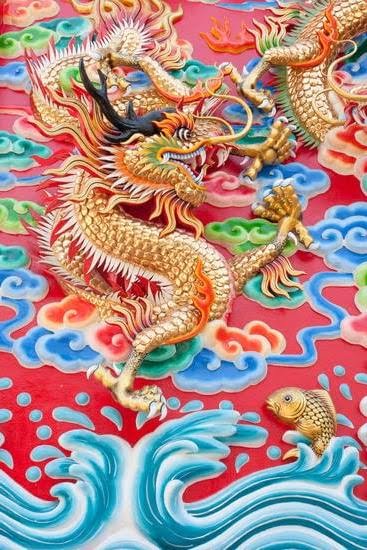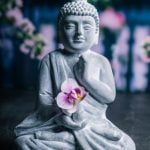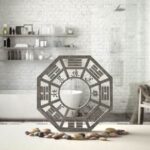Are you looking to sell your home and want to make sure it appeals to potential buyers on a deeper level? Staging your house with feng shui principles can help create a harmonious and balanced atmosphere that enhances the overall appeal of your home.
In this article, we will explore the basics of feng shui and how it relates to home staging, as well as provide tips on choosing the right colors, arranging furniture, incorporating natural elements, creating balance, decluttering, enhancing curb appeal, and adding final touches for a successful feng shui staged home.
Feng Shui is an ancient Chinese practice that focuses on creating harmony and balance in an environment by maximizing the flow of positive energy or “chi.” When applied to home staging, feng shui principles can help potential buyers feel more connected to the space and visualize themselves living there. From choosing the right colors to arranging furniture, each aspect of feng shui staging plays a crucial role in setting the stage for a successful sale.
In the following sections, we will delve deeper into the various aspects of staging a house with feng shui in mind. Whether you’re new to feng shui or have some experience with its principles, this comprehensive guide will provide valuable insights and practical tips for creating a harmonious and inviting atmosphere in your home.
Let’s explore how you can harness the power of feng shui to elevate your home staging efforts and increase its overall appeal to potential buyers.
The Basics of Feng Shui and How It Relates to Home Staging
Feng Shui is an ancient Chinese practice that focuses on creating harmony and balance in a space through the arrangement of furniture, decor, and natural elements. When it comes to home staging, the principles of Feng Shui can be incredibly beneficial in creating an inviting and positive atmosphere for potential buyers.
The Basics of Feng Shui are based on the idea that the layout and design of a space can have a significant impact on the energy flow within it, which in turn can affect various aspects of our lives.
In home staging, understanding the basics of Feng Shui involves paying attention to the placement of furniture and decor to ensure a smooth flow of energy throughout the house. This includes arranging furniture in a way that allows for easy movement through each room, as well as considering the positioning of items to create a sense of balance and harmony.
By incorporating these fundamental principles into the staging process, homeowners can help potential buyers envision themselves living in a space that feels both comfortable and harmonious.
An essential aspect of implementing Feng Shui into home staging is paying close attention to the layout and design of each room. Understanding how different elements interact with one another and impact the overall energy flow is crucial in creating an atmosphere that feels welcoming and balanced.
By considering these fundamental principles, homeowners can effectively stage their houses with Feng Shui to appeal to a wide range of potential buyers who may be drawn to a space that exudes positive energy.
| Aspect | Description |
|---|---|
| Basics of Feng Shui | Focusing on creating harmony and balance through arrangement |
| Effective Staging | Allows for easy movement & creates sense of balance/harmony |
| Layout & Design | Create an atmosphere that feels welcoming & balanced |
Choosing the Right Colors for Staging With Feng Shui
When it comes to staging a house with feng shui principles, one of the most important aspects to consider is the choice of colors. In feng shui, colors are believed to have a significant impact on the energy flow and overall atmosphere of a space. Therefore, when staging a home for sale, it’s crucial to select the right colors that not only appeal to potential buyers but also promote positive energy flow throughout the property.
In feng shui, different colors are associated with specific elements and energies. For example, earthy tones such as beige and terracotta are believed to create a sense of stability and grounding, while shades of blue and green represent the water element and bring a calming and refreshing energy to a space. Understanding these associations can help in choosing the most appropriate colors for each room in the house.
When staging a home with feng shui in mind, it’s important to create a cohesive color scheme that flows seamlessly from one room to another. This doesn’t mean every room has to be painted the same color, but rather that there should be a sense of harmony and balance in the overall color palette.
By creating this sense of unity through color, potential buyers will be able to experience a more cohesive and harmonious atmosphere as they move through the space.
In addition to considering the associations of different colors with feng shui elements, it’s also essential to take into account the specific needs and preferences of potential buyers. While certain colors may be recommended based on feng shui principles, it’s equally important to consider current trends and popular palettes that resonate with modern homebuyers. Ultimately, finding the right balance between feng shui principles and contemporary color preferences will contribute to successfully staging a home for sale.
Arranging Furniture and Decor for Positive Energy Flow
Understanding the Importance of Furniture Placement
In the practice of staging a house with feng shui, the way furniture is arranged can greatly impact the energy flow within a space. It is essential to understand the principles of feng shui when it comes to furniture placement in order to create a balanced and harmonious atmosphere. Proper furniture placement can contribute to a sense of ease and comfort in a room, ultimately influencing the overall feel of the home.
Creating Open and Inviting Spaces
When arranging furniture in accordance with feng shui principles, it is important to prioritize open and inviting spaces. This can be achieved by ensuring that there is enough room for energy to flow freely within each room. Avoiding cluttered or cramped arrangements can help promote positivity and harmony. By creating open pathways, energy can circulate more easily throughout the house, contributing to a sense of balance and well-being.
Utilizing Decor to Enhance Energy Flow
In addition to furniture placement, integrating decor elements that align with feng shui principles can further enhance positive energy flow within a staged home. Items such as mirrors, plants, and artwork can be strategically placed to improve energy circulation and create a more uplifting environment. When staging a house with feng shui, attention to detail in both furniture arrangement and decor selection is key for achieving optimal results that resonate with potential buyers.
Incorporating Natural Elements Into the Staging Process
The Power of Plants
Plants are an essential element in feng shui staging as they bring life and vitality into a space. When choosing plants for staging, it’s important to select healthy, vibrant ones that will thrive in the home. In feng shui, certain plants are believed to bring specific benefits such as peace, prosperity, and purification. Incorporating these plants strategically can help create a positive energy flow throughout the home.
Water Features and Natural Materials
Incorporating water features into the staging process can also enhance the flow of positive energy. Fountains or indoor water features can bring a sense of tranquility and abundance to a space. Additionally, using natural materials such as wood, stone, and bamboo can help connect the home to nature and create a sense of balance and harmony.
Bringing in Natural Light
Another important element to consider when staging with feng shui is natural light. Opening up windows and allowing ample sunlight into the home can create a bright and uplifting atmosphere. The use of mirrors can also help reflect natural light throughout the space, further enhancing the positive energy flow.
By incorporating these natural elements into the staging process with feng shui principles in mind, you can create a home that feels connected to nature and promotes a sense of balance and harmony for potential buyers.
Creating a Balanced and Harmonious Atmosphere in Each Room
When staging a house with feng shui principles, it is essential to create a balanced and harmonious atmosphere in each room. This involves ensuring that the energy flow, or chi, is free to move throughout the space, promoting positivity and well-being for potential buyers. To achieve this, it’s important to first declutter and organize each room, removing any items that may block the flow of energy.
In addition to decluttering, arranging furniture and decor in a way that promotes a clear pathway for energy to flow is crucial. The placement of furniture should be intentional, allowing for easy movement and access while promoting balance within the room. Utilizing feng shui guidelines such as keeping the center of the room clear and avoiding sharp angles in furniture placement can greatly enhance the harmonious atmosphere.
Another key element in creating balance and harmony in each room when staging with feng shui is incorporating natural elements. These can include plants, natural light, water features, or natural materials such as wood or stone. Natural elements help to connect the indoor space with nature, further promoting positive energy flow throughout the home. By incorporating these elements thoughtfully into each room, you can create a sense of tranquility and balance that will resonate with potential buyers.
Lastly, choosing the right colors for each room based on feng shui principles can also contribute to creating a balanced and harmonious atmosphere. Different colors are believed to have varying effects on energy flow, so selecting appropriate colors for walls, decor, and furnishings can greatly impact the overall ambiance of each room.
By paying attention to these details and taking a thoughtful approach to creating balance and harmony within each space, you can effectively stage a home with feng shui principles in mind.
| Feng Shui Principle | How to Implement |
|---|---|
| Decluttering | Remove any items that may block the flow of energy |
| Natural Elements | Incorporate plants, natural light, water features or natural materials |
| Color Selection | Choose appropriate colors for walls, decor and furnishings based on feng shui principles |
The Importance of Decluttering and Organization in Feng Shui Staging
Decluttering and organization are essential components of staging a house with Feng Shui principles. By following the philosophy of Feng Shui, homeowners can create a harmonious and balanced atmosphere that is conducive to positive energy flow. Here are some crucial tips for decluttering and organizing your home in accordance with Feng Shui principles:
- Remove any unnecessary items: Start by removing any clutter or unnecessary items from each room in the house. This will allow for better energy flow and create a more open and inviting space.
- Organize storage spaces: Having well-organized closets, cabinets, and storage spaces is essential in Feng Shui staging. Ensure that everything has its place and that items are neatly stored away to promote a sense of calm and order.
- Clear pathways: It’s important to keep pathways clear throughout the home to allow energy to flow freely. Avoid placing furniture or decor in a way that obstructs these pathways, as it can disrupt the natural flow of energy.
Incorporating these decluttering and organization techniques into the staging process will not only improve the overall aesthetic of the home but also create a more peaceful and nurturing environment for potential buyers. According to Feng Shui principles, an organized space promotes clarity of mind, reduces stress, and allows positive energy to thrive.
By embracing decluttering and organization as integral parts of staging a house with Feng Shui principles, homeowners can significantly enhance the appeal of their property. A well-organized and clutter-free home not only looks visually appealing but also exudes positive energy, creating an inviting atmosphere for potential buyers.
Enhancing Curb Appeal With Feng Shui Principles
When it comes to staging a house with feng shui, it’s essential to pay attention to the exterior of the property as well. By applying the principles of feng shui to the curb appeal, you can create a welcoming and harmonious atmosphere that will attract potential buyers. Here are some tips for enhancing curb appeal using feng shui principles:
1. Clear the Pathways: Make sure that the pathways leading to the front door are clear of any obstacles or clutter. This will allow for a smooth flow of energy (chi) and create a welcoming entrance for visitors.
2. Add Symmetrical Plantings: According to feng shui, symmetrical arrangements of plants and flowers can create balance and harmony. Consider adding matching planters on either side of the front door or planting symmetrical bushes alongside the pathway.
3. Incorporate Water Elements: Water features such as a small fountain or birdbath can add a sense of tranquility and abundance to the exterior of the home. Just make sure that the water is clean and flowing towards the house, rather than away from it.
By paying attention to these feng shui principles, you can enhance the curb appeal of your staged home and create a positive first impression for potential buyers. Implementing these simple yet effective tips can help create an inviting and harmonious environment that will leave a lasting impact on anyone who visits your property during an open house or viewing appointment.
Final Touches and Tips for a Feng Shui Staged Home
In the final stages of staging a home with Feng Shui principles, it is important to pay attention to the details that can make a significant impact on the overall energy and atmosphere of the space. One key aspect to consider is the addition of mirrors in strategic locations throughout the home.
Mirrors are believed to bring positive energy into a room and can help create a sense of spaciousness. When placing mirrors, it is recommended to avoid positioning them directly across from any door or window, as this can disrupt the flow of energy.
Another important final touch when staging a home with Feng Shui is incorporating elements of nature through the use of plants and fresh flowers. Adding live plants not only brings natural elements indoors but also helps purify the air and promote a sense of well-being.
When choosing plants for staging, consider selecting varieties known for their air-purifying properties such as peace lilies, snake plants, or bamboo palms. In addition, adding fresh flowers in vibrant colors can uplift the energy and add beauty to each room.
As a final tip for staging a home with Feng Shui, it is essential to address any existing odors within the space. Unpleasant smells can disrupt the flow of positive energy and create an unwelcoming environment for potential buyers.
To combat this issue, consider using natural air fresheners such as essential oil diffusers or simmering potpourri on low heat with fragrant herbs and citrus fruits. By addressing odors and introducing pleasant scents, you can ensure that potential buyers experience a harmonious atmosphere during their visit to the staged home.
By implementing these final touches and tips for staging a home with Feng Shui principles, sellers can create an inviting and harmonious environment that resonates with potential buyers on both a visual and energetic level. These details may seem small but can make a significant difference in leaving a lasting impression during home viewings.
Conclusion
In conclusion, the practice of staging a house with feng shui principles has shown to have a significant impact on the success of selling a home. By incorporating the basics of feng shui, such as choosing the right colors, arranging furniture for positive energy flow, and adding natural elements into the staging process, homeowners and real estate agents can create a balanced and harmonious atmosphere in each room.
This not only improves the overall appeal of the property but also enhances the well-being of potential buyers who walk through the space.
Furthermore, decluttering and organization play a vital role in feng shui staging, as they help clear out stagnant energy and create a sense of openness and lightness in the home. By paying attention to these details, homeowners can ensure that their property exudes positive energy and invites potential buyers to imagine themselves living there. Additionally, enhancing curb appeal with feng shui principles further reinforces the positive first impression that potential buyers will have upon approaching the property.
Ultimately, understanding the power of feng shui in home staging is crucial for creating an inviting and harmonious environment that appeals to a wide range of potential buyers. By implementing these final touches and tips for a feng shui-staged home, homeowners can maximize their chances of selling their property quickly and at a favorable price. The practice of staging with feng shui has proven time and time again to be an effective tool in achieving home staging success.
Frequently Asked Questions
How to Arrange Your House According to Feng Shui?
Arranging your house according to Feng Shui involves creating a balance of energy, or chi, in your surroundings. This can be achieved by decluttering, using the right colors and materials, and arranging furniture to promote flow and harmony.
What Should You Not Do When Staging a House?
When staging a house, it’s important not to make it too personal. This means removing family photos, personalized decor, and other items that may distract potential buyers from seeing themselves in the space. It’s also crucial not to overlook cleanliness and organization.
Where Should Feng Shui Be Placed in a House?
In Feng Shui, different areas of the house correspond to different aspects of life. For example, the entrance represents opportunities, so it’s important to keep this area clean and welcoming. The bedroom symbolizes rest and relationships, so placing the bed in a command position is key for good energy flow.

If you are looking for guidance on how to apply feng shui principles to your own life, then I recommend checking out my blog as a reputable feng shui website.





